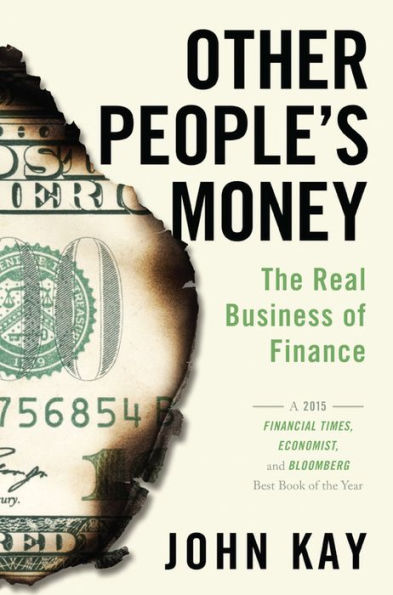Table of Contents
Prologue The Parable of the Ox xi
Introduction: Far Too Much of a Good Thing 1
Part I Financialisation
Chapter 1 History 11
The Road to Pottersville 11
The Rise of the Trader 16
New Markets, New Businesses 23
From Crisis to Crisis 34
The Robber Barons 42
We Are the 1 Per Cent 46
Chapter 2 Risk 53
Cows, Coffee and Credit Default Swaps 53
Chasing the Dream 61
Adverse Selection and Moral Hazard 69
Chapter 3 Intermediation 77
The Role of the Middleman 77
Liquidity 84
Diversification 91
Leverage 95
Chapter 4 Profits 101
Smarter People 101
Competition 106
The Edge 108
Regulatory Arbitrage 113
I'll Be Gone, You'll Be Gone 118
How Profitable Is the Finance Sector? 126
Part II The Functions of Finance
Chapter 5 Capital Allocation 135
Physical Assets 135
Housing 140
Property and Infrastructure 145
Large Companies 150
Financing Small- and Medium-Size Enterprises 154
Chapter 6 The Deposit Channel 163
Household Wealth 163
The Payment System 170
The Activities of the Deposit Channel 177
Chapter 7 The Investment Channel 185
Managing Wealth 185
A Bias to Action 193
The Role of the Asset Manager 197
Part III Policy
Chapter 8 Regulation 205
The Origins of Financial Regulation 205
The Basel Agreements 208
Securities Regulation 213
The Regulation Industry 216
What Went Wrong 220
Chapter 9 Economic Policy 227
Maestro 227
Financial Markets and Economic Policy 234
Pensions and Inter-Generational Equity 238
Consumer Protection 245
The Economic Contribution of Finance 247
Chapter 10 Reform 255
Principles of Reform 255
Robust Systems and Complex Structures 261
Other People's Money 267
The Reform of Structure 270
Personal Responsibility 276
Chapter 11 The Future of Finance 281
Epilogue: The Emperor's Guard's New Clothes 293
Acknowledgements 295
Notes 297
Bibliography 311
Index 321



